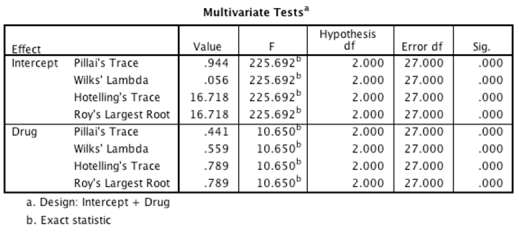A scientist was interested in the success of a newly developed sleep aid called 'Night Owl' on time taken to fall asleep and quality of sleep. She recruited 30 participants who were randomly allocated to receive either a dose of Night Owl or a placebo. The scientist measured the mean time taken for each participant to fall asleep (minutes) and the quality of their sleep (measured on a scale of 1 (poorest quality) to 10 (best possible quality) ) over the course of one week.
-What can the scientist conclude from the output below?
Definitions:
Polyandry
A type of marriage where a woman is simultaneously married to more than one man.
Polygyny
A form of marriage in which a man is allowed to have more than one wife.
Polygamy
The practice or condition of having more than one spouse at the same time.
Monogamy
Monogamy is a relationship or mating system in which an individual has only one partner during their lifetime or at any one time.
Q2: A researcher collected some data to look
Q3: Which statement best sums up this part
Q7: How is a variable name different from
Q8: A computer like the one in the
Q12: Which of the following are potential sources
Q17: The odds ratio is?<br>A) The natural log
Q18: A researcher measured a group of people's
Q19: A consumer researcher was interested in what
Q26: What two assumptions must not be violated
Q132: Examples of _ users include engineers, scientists,